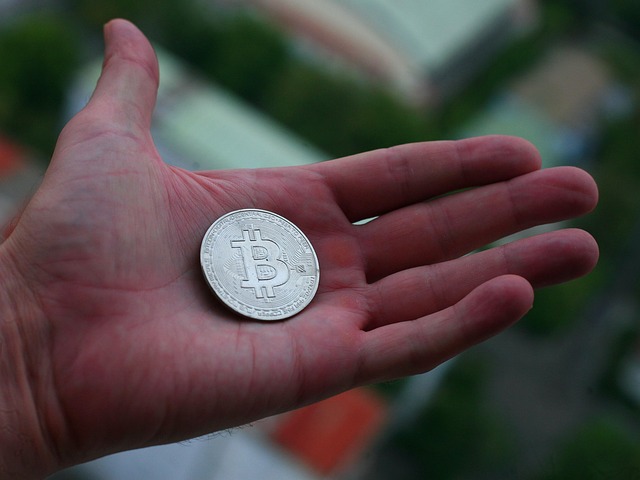Bitcoin-to-gold ratio breaks 12-year support as gold price hits a record $3K
Bitcoin (BTC) breached a rising support trendline against gold (XAU), which has been intact for over 12 years, on March 14. XAU/BTC ratio weekly performance chart. Source: TradingView/NorthStarPopular analyst NorthStar says this breakdown could spell the end of Bitcoin’s 12-year bull run if it stays under the gold trendline for even a week or—worse—a month. Is Bitcoin’s bull market over? Let’s take a closer look at BTC’s correlation with gold. Gold hits new record high as Bitcoin’s uptrend coolsThe BTC/XAU ratio breakdown occurred as spot gold rates hit a new record high above $3,000 per ounce on March 14, after rising by about 12.80% year-to-date. In contrast, Bitcoin, which is often called “digital gold,” has dropped by 11% so far in 2025.BTC/USD vs. XAU/USD YTD performance chart. Source: TradingViewThe performances reflect the contrasting net flows into US-based spot exchange-traded funds (ETF) tracking Bitcoin and gold.For instance, as of March 14, the US-based spot gold ETFs had collectively attracted over $6.48 billion YTD, according to data resource World Gold Council. Globally, gold ETFs have seen $23.18 billion in inflows.Gold ETFs weekly holdings by region. Source: GoldHub.comOn the other hand, US-based spot Bitcoin ETFs saw nearly $1.46 billion in outflows YTD, according to onchain data platform Glassnode. US Bitcoin ETFs year-to-date net flows. Source: Glassnode The driving force behind this divergence lies in growing macroeconomic uncertainty and risk-off sentiment, exacerbated by President Donald Trump’s aggressive trade policies. Related: Bitcoin panic selling costs new investors $100M in 6 weeks — ResearchNew tariffs on China, Mexico, and Canada have heightened fears of a global economic slowdown, pushing investors toward traditional safe-haven assets like gold. Meanwhile, central banks, including those in the US, China, and the UK, have accelerated their gold purchases, further boosting gold prices. Countries that acquired the most gold so far in 2025. Source: GoldHub.comIn contrast, Bitcoin is mirroring the broader risk-on market. As of March 14, its 52-week correlation coefficient with the Nasdaq Composite index was 0.76.BTC/USD vs. Nasdaq Composite 52-week correlation coefficient chart. Source: TradingViewHas Bitcoin price topped?The current Bitcoin-to-gold breakdown aligns with historical patterns, particularly the March 2021–March 2022 fractal, which preceded the last bear market.At that time, the BTC/XAU ratio exhibited a bearish divergence, characterized by rising prices juxtaposed against a declining relative strength index (RSI). This pattern suggested diminishing upward momentum.BTC/XAU ratio two-week performance chart. Source: TradingViewConsequently, the ratio initially retreated toward the 50-period, two-week exponential moving average (EMA) support level before ultimately plummeting by 60%.That BTC/XAU breakdown period coincided with Bitcoin’s 68% correction against the US dollar.BTC/USD two-week performance chart. Source: TradingViewBTC/XAU has once again completed a two-phase EMA retest, echoing the 2021–2022 fractal. BTC/USD two-week performance chart (zoomed). Source: TradingViewWith the RSI showing bearish divergence, momentum appears to be fading, increasing the probability of further declines, especially if the ratio drops decisively below the 50-2W EMA support (~26 XAU).As a result, it could also indicate Bitcoin’s increased vulnerability to price declines in dollar terms, with the 50-2W EMA below $65,000 acting as the next potential downside target.BTC/USD 2W price performance chart. Source: TradingViewThat is down about 40% from Bitcoin’s record high of around $110,000 established in January. Still, Nansen analysts consider such a decline as a “correction within a bull market,” raising possibilities of a bullish revival if the 50-2W EMA holds as support. However, a definitive break below the EMA could thrust Bitcoin into bear market territory. That could drag Bitcoin’s 2025 downside target toward the 200-period two-week EMA (the blue wave) to as low as $34,850 if this Bitcoin-gold fractal repeats. This article does not contain investment advice or recommendations. Every investment and trading move involves risk, and readers should conduct their own research when making a decision.
Court says Bitcoin mining host can’t block tenant access to its rigs
A Delaware court has granted a temporary reprieve to a Pennsylvanian Bitcoin mining firm currently in a payment dispute with its hosting company — barring the hosting provider from blocking access and otherwise commandeering the miner’s 21,000 rigs at the property. Vice Chancellor Morgan Zurn granted a temporary restraining order on March 12, requested by Bitcoin miner Consensus Colocation and systems owner Stone Ridge Ventures against Mawson Hosting, which provides hosting and colocation services for Bitcoin miners. The firms have been in disagreement over alleged unpaid fees, the terms of their agreement and Consensus’ plan to relocate, allegedly leading to Mawson blocking the miner’s personnel from accessing the site. The firms have also alleged Mawson has been operating the rigs since Feb. 28 for their own gain after preventing Consensus from entering the premises. Mawson, however, claims they are allowed to use the rigs under the terms of its agreement with Consensus, and they have the right of first refusal for its relocation plans. The Bitcoin miner has been seeking injunctive relief to regain control of their equipment and prevent Mawson from using them. As part of the March 12 order, Mawson is barred from using the hashrate from the miners and will no longer be allowed to restrict Consensus’s digital and physical access to the rigs in the Midland, Pennsylvania, facility. A Delaware judge has granted a temporary restraining order barring Mawson Infrastructure Group from using the rigs at the Midland, Pennsylvania, facility. Source: Law360The temporary restraining is in force until the matter can be heard in a preliminary injunction hearing.Mawson Infrastructure Group and Consensus Colocation did not immediately respond to Cointelegraph’s request for comment. How the dispute beganIn a March 6 legal complaint, lawyers acting for Consensus accused Mawson of mining Bitcoin (BTC) with their rigs — valued at $30 million — since Feb. 28, generating daily profits of between $100,000 and $200,000 while blocking access to them both physically and through VPN access. Consensus and Stone Ridge signed a colocation agreement with Mawson in December 2023. They agreed to terminate the partnership by the end of March 2025, with a gradual reduction in capacity leading up to the deadline and a removal process scheduled to begin on March 3.Mawson argues that it was owed fees and electricity prepayments for February and March, and its colocation agreement gives it the right to redirect the hashrate of Consensus’ miners and use the proceeds to replenish the deposit.Related: US-Canada tariff flip-flops have Bitcoin miners on their toes“On its face, it was operative only prior to April 1, 2024, and only in narrow circumstances relating to the replenishment of a deposit,” lawyers acting for Consensus said in the suit. “When Mawson began redirecting the hashrate on Feb. 28, the deposit was fully paid. And in any event, Mawson has stolen hashrate worth many times more than the $17,505.45 Mawson claims, without justification, that Consensus owes in purported late fees.”Magazine: Train AI agents to make better predictions… for token rewards
Senate Banking Committee advances GENIUS stablecoin bill
The United States Senate Banking Committee elected to advance the Guiding and Establishing National Innovation for US Stablecoins (GENIUS) Act in an 18-6 vote.None of the amendments proposed by Senator Elizabeth Warren made it into the bill, including her proposal to limit stablecoin issuance to banking institutions.“Without changes, this bill will supercharge the financing of terrorism. It will make sanctions evasion by Iran, North Korea, and Russia easier,” Warren argued.Senator Warren argues for amendments to be included in the bill. Source: US Senate Banking Committee GOPSenator Tim Scott, chairman of the Senate Banking Committee, characterized the bill as a victory for innovation. The Senator said:”The GENIUS Act establishes Common Sense rules that require stablecoin issuers to maintain reserves backed one-to-one, comply with anti-money laundering laws, and ultimately protect American consumers while promoting the US dollar’s strength in the global economy.”The bill must still pass a vote in both chambers of Congress before it is turned over to President Trump and ultimately signed into law. However, the Senate Banking Committee advancing the bill represents the first step in clear, comprehensive legislation requested by the crypto industry.Senator Tim Scott, chairman of the Senate Banking Committee, leads the hearing. Source: US Senate Banking Committee GOPRelated: The GENIUS stablecoin bill is a CBDC trojan horse — DeFi execGENIUS Act gets overhaul to feature stricter provisionsSenator Bill Hagerty, who introduced the bill in February 2025, defended the legislation against the proposed amendments from Senator Warren, arguing that the bill already includes provisions for consumer protection, Anti-Money Laundering, and crime prevention.On March 10, Hagerty announced that the bill was updated to include stricter reserve requirements for stablecoin issuers, AML provisions, safeguards against terrorist financing, transparent risk management procedures, and stipulations for sanctions compliance.According to Dom Kwok, founder of the Web3 learning platform Easy A, the newly added provisions will make it harder for foreign stablecoin issuers to comply, giving US-based firms a competitive edge.Senator Bill Hagerty defends his bill from proposed amendments. Source: Senate Banking Committee GOPAttorney Jeremy Hogan said the GENIUS Act signals an impending merger of the traditional financial system with stablecoins.“The legislation is explicitly making plans for stablecoins to interact with the traditional digital banking system. The ‘merge’ is being planned,” the attorney wrote in a March 10 X post.During the March 7 White House Crypto Summit, US Treasury Secretary Scott Bessent explicitly said that the Trump administration would leverage stablecoins to protect the US dollar’s global reserve status.Magazine: Bitcoin payments are being undermined by centralized stablecoins
DigiFT launches Invesco private credit token on Arbitrum
Digital asset exchange DigiFT has launched Invesco’s tokenized private credit strategy on Arbitrum, further expanding the use cases of real-world assets (RWA) and giving institutional investors access to onchain credit markets.According to a March 13 announcement, Invesco’s US Senior Loan Strategy (iSNR) token is now live on Arbitrum, a popular Ethereum layer-2 network.The tokenized asset was launched on Feb. 19 and is designed to track the performance of a private credit fund managed by Invesco, a publicly traded investment manager headquartered in Atlanta, Georgia. At the time of launch, the Invesco fund had $6.3 billion in assets under management, according to Bloomberg. DigiFT described the iSNR token as the “first and only tokenized private credit strategy.”The iSNR tokenized fund has a minimum investment of $10,000. Source: DigiFTDigiFT CEO Henry Zhang said adding iSNR to Aribitrum increases its utility by “allowing DeFi applications, DAOs and institutional investors to integrate with a regulated, onchain private credit strategy.”Consistent with the initial launch of iSNR on Ethereum last month, investors on Arbitrum can purchase tokenized shares using popular stablecoins USDC (USDC) and USDt (USDT).Related: Cantor Fitzgerald taps Anchorage Digital, Copper as Bitcoin custodiansDeFi tokenization on the riseDespite the recent crypto market downtrend, RWA tokenization appears to be heating up with the launch of several DeFi-oriented products. Positive regulatory developments, the rise of liquid multichain economies and innovations in decentralized exchanges are expected to push RWA tokenization into the crypto limelight this year. Earlier this week, tokenization company Securitize announced that oracle provider RedStone will deliver price feeds for its tokenized products, which include the BlackRock USD Institutional Liquidity Fund (BUIDL) and the Apollo Diversified Credit Securitize Fund (ACRED). The integration means that Securitize’s funds “can now be utilized across DeFi protocols such as Morpho, Compound or Spark,” RedStone’s chief operating officer, Marcin Kazmierczak, told Cointelegraph. Meanwhile, asset manager Franklin Templeton has launched a tokenized money fund on the Coinbase layer-2 network Base and a US government money fund on Solana. Private credit ($12.2 billion) and US Treasury debt ($4.2 billion) have dominated real-world asset tokenization so far. Source: RWA.xyzAccording to industry data, the total value of RWAs onchain has grown by 17.5% over the past 30 days to reach $18.1 billion. Private credit and US Treasury debt account for nearly 91% of that total. Related: Trump-era policies may fuel tokenized real-world assets surge
Hyperliquid ups margin requirements after $4 million liquidation loss
Hyperliquid, a blockchain network specializing in trading, has increased margin requirements for traders after its liquidity pool lost millions of dollars during a massive Ether (ETH) liquidation, the network said. On March 12, a trader intentionally liquidated a roughly $200 million Ether long position, causing Hyperliquid’s liquidity pool, HLP, to lose $4 million, unwinding the trade. Starting March 15, Hyperliquid will begin requiring traders to maintain a collateral margin of at least 20% on certain open positions to “reduce the systemic impact of large positions with hypothetical market impact upon closing,” Hyperliquid said in a March 13 X post. The incident highlights the growing pains confronting Hyperliquid, which has emerged as Web3’s most popular platform for leveraged perpetual trading. Hyperliquid has adjusted margin requirements for traders. Source: HyperliquidHyperliquid said the $4 million loss was not from an exploit but rather a predictable consequence of the mechanics of its trading platform under extreme conditions. “[Y]esterday’s event highlighted an opportunity to strengthen the margining framework to address extreme conditions more robustly,” Hyperliquid said. These changes only apply in certain circumstances, such as when traders are withdrawing collateral from open positions, Hyperliquid said. Traders can still take on new positions with up to 40 times leverage.Perpetual futures, or “perps,” are leveraged futures contracts with no expiry date. Traders deposit margin collateral — typically USDC (USDC) for Hyperliquid — to secure open positions. By withdrawing most of his collateral and liquidating his own position, the trader effectively cashed out of his trade without incurring slippage — or losses from selling a large position all at once. Instead, those losses were borne by Hyperliquid’s HLP liquidity pool. Hyperliquid’s HLP has more than $350 million in TVL. Source: DeFiLlamaRelated: Crypto market liquidations likely reached $10B — Bybit CEOLeading perps exchangeAs of March 13, HLP has a total value locked (TVL) of approximately $340 million sourced from user deposits, according to DefiLlama. Launched in 2024, Hyperliquid’s flagship perps exchange has captured 70% of the market share, surpassing rivals such as GMX and dYdX, according to a January report by asset manager VanEck. Hyperliquid touts a trading experience comparable to a centralized exchange, featuring fast settlement times and low fees, but is less decentralized than other exchanges.As of March 12, Hyperliquid has clocked approximately $180 million per day in transaction volume, according to DefiLlama. Magazine: Trump’s crypto ventures raise conflict of interest, insider trading questions
Circle plans to bring $900M money market fund under DABA license
Circle, the creator of stablecoin USDC (USDC), announced on March 13 plans to bring its Hashnote Tokenized Money Market Fund (TMMF) under Bermuda regulatory oversight through the company’s existing Digital Assets Business Act (DABA) license.Hashnote, which Circle acquired in January 2025, is the issuer of USDY, the largest tokenized treasury and money market fund with a total value locked (TVL) of $900 million, according to DefiLlama. The fund’s TVL has fallen from $1.9 billion as of Jan. 7.Hashnote USYC TVL over time. Source: DefiLlamaRelated: Wall Street is betting on $30T RWA tokenization market prospectsAccording to the announcement, Circle intends to fully integrate USDY with USDC, which would allow for access between the TMMF and the stablecoin. The company believes that this will make USDY “the preferred form” of yield-bearing collateral on crypto exchanges, including for custodians and brokers.According to Freeman Law, Bermuda enacted one of the first legal and regulatory frameworks for governing digital assets. Circle was the first firm in crypto to receive a license under the Bermuda Monetary Authority in September 2021. Bermuda’s Digital Assets Business Act currently permits three types of licenses for companies conducting business under the Act.Tokenized RWAs a “$30-trillion opportunity”In August 2024, Colin Butler, Polygon’s head of institutional capital, said that tokenized real-world assets (RWAs) are a $30-trillion market opportunity globally. He believed that the push would likely come from high-net-worth individuals who will allocate money to alternative assets as tokenization creates liquidity in previously illiquid markets.Also, in August 2024, it was predicted that tokenized US Treasurys would surpass a $3 billion market capitalization by the end of 2024. According to RWA.xyz, the tokenized US Treasurys market cap sits at $4.2 billion at the time of this writing. Hashnote is the No. 2 protocol for tokenized US Treasurys, according to the platform, although its market cap has fallen 21% in the past 30 days.Related: Infrastructure for legally viable RWA tokenization: AMA recap with MantraThe overall market cap for RWAs surpassed $15.2 billion at the end of 2024, driven largely by institutional players who piloted tokenization projects related to a host of real-world goods, including real estate, gold, diamonds and carbon credits. The market cap initially reclaimed an all-time high of $17.1 billion on Feb. 3 but has since gone even further, rising to $18.1 billion at the time of this writing.Tokenization is changing different areas of finance, including creating liquidity for illiquid assets and leveraging the blockchain to facilitate transparent and efficient transactions. It isn’t limited to a single type of asset, which gives the technology broader use cases.Magazine: Tokenizing music royalties as NFTs could help the next Taylor Swift
Bitcoin price drops 2% as falling inflation boosts US trade war fears
Bitcoin (BTC) shrugged off gains at the March 13 Wall Street open as US inflation markers continued to fall.BTC/USD 1-hour chart. Source: Cointelegraph/TradingViewGood news is bad news? Bitcoin follows stocks lowerData from Cointelegraph Markets Pro and TradingView showed BTC/USD circling $81,500, down 2.3% on the day.The February print of the Producer Price Index (PPI) came in below median expectations, copying the Consumer Price Index (CPI) results from the day prior.“On an unadjusted basis, the index for final demand advanced 3.2 percent for the 12 months ended in February,” an accompanying press release from the US Bureau of Labor Statistics (BLS) stated.“In February, a 0.3-percent increase in prices for final demand goods offset a 0.2-percent decline in the index for final demand services.”US PPI 1-month % change. Source: BLSAlready a double tailwind for crypto and risk assets, cooling inflation also stunted a rebound in US dollar strength, as viewed through the US Dollar Index (DXY).US Dollar Index (DXY) 1-hour chart. Source: Cointelegraph/TradingViewDespite this, both stocks and crypto remained unmoved, leading trading resource The Kobeissi Letter to tie in the ongoing US trade war.“As we have seen, the market has had a very MUTED reaction to inflation data that would’ve previously sent the S&P 500 SHARPLY higher,” it wrote in part of its latest analysis on X “Why is this the case? This data provides President Trump a reason to keep doing what he is currently doing.”S&P 500 1-hour chart. Source: Cointelegraph/TradingViewKobeissi explained that trader war efforts may now intensify given slowing inflation.“This is exactly why markets are not recovering losses following some of the best inflation data in months,” it continued, suggesting traders should “buckle up for more volatility.”A week before the Federal Reserve’s next interest rate decision, market expectations for financial easing remained similarly lackluster, with the chance of a cut at just 1%, per data from CME Group’s FedWatch Tool. Odds for the Fed’s May meeting were at 28%.Fed target rate probabilities. Source: CME Group“The Fed has already decided: steady course, no cuts this FOMC. Powell made that clear last week,” popular crypto trader Josh Rager told X followers earlier in the week, referencing a recent speech by Fed Chair Jerome Powell. “Rate cuts? More likely in May/June, not March.”BTC price inertia leaves key resistance intactBitcoin price action thus sat between bands of buy and sell liquidity on exchange order books, with the 200-day simple moving average (SMA) in place as resistance.Related: Bitcoin whales hint at $80K ‘market rebound’ as Binance inflows coolFor Keith Alan, co-founder of trading resource Material Indicators, this trendline, which typically functions as support during Bitcoin bull markets, was the nearest important level to reclaim.“Bitcoin faces strong resistance at the 200-Day MA for the 4th consecutive day,” he summarized on X.Referring to Material Indicators’ proprietary trading tools, Alan concluded that such a reclaim was unlikely on the day, notwithstanding surprise catalysts in the form of announcements from the US government.BTC/USD 1-day chart. Source: Keith Alan/XMeanwhile, data from monitoring resource CoinGlass showed key upside resistance clustered immediately below $85,000.BTC liquidation heatmap (screenshot). Source: CoinGlassThis article does not contain investment advice or recommendations. Every investment and trading move involves risk, and readers should conduct their own research when making a decision.
US-Canada tariff flip-flops have Bitcoin miners on their toes
Bitcoin miners are adapting their business strategies as the continued trade war between the US and Canada makes energy prices and policies all the more uncertain.US President Donald Trump threatened to double his tariffs on steel and aluminum from 25% to 50%, leading the government of the province of Ontario to walk back its own plan to increase the cost of power exports to the US.Ontario Premier Doug Ford had promised to further increase the surcharge or even “shut off the electricity completely,” given further provocation. However, he appears to have softened his stance, at least for now. The trade war may have reached a lull, but some crypto firms are looking ahead at possible policy changes in order to protect their growth. Bitcoin miners expect changes in energy marketsBen Ganon, the CEO of Canadian Bitcoin mining firm Bitfarms, told Bloomberg on March 11 that the recent energy price hikes, had they gone through, were unlikely to affect his firm’s business. Bitfarms’ operations are mostly in Quebec and British Columbia, both of which boast significant hydroelectric capacity in relation to the total provincial energy mix. Ontario, by comparison, is “not as robust of an energy market. And over the last several years, they’ve really taken a big push on cutting back on baseload capacity.”But even though Bitfarms’ energy situation may look solid for the time being, Ganon said that the tariffs “have implications for what policy and regulatory frameworks are going to look like in the future.”He said that his firm wants to see “greater access to electricity markets” as well as fewer regulations on setting up a new business or new power applications. Energy policy has been a contentious area of debate in Canadian politics, with critics accusing the Liberal government — now led by Prime Minister Mark Carney — of harming the Canadian economy with their strategies to lower emissions. Related: What Canada’s new Liberal PM Mark Carney means for cryptoGanon said: “The opportunities that are present in the United States are also present in Canada. And I think that this will all resolve itself and end up in a much more deregulated and smooth and efficient market because for years it’s been tied up in regulatory red tape.”How would a Bitcoin miner benefit from tariffs?Tariffs on goods such as steel, aluminum, and other industrial products — intended to encourage domestic production in the US— also impact Bitcoin miners, with some effects being unexpectedly beneficial.While Ganon noted that miners can’t control the Bitcoin price, they can control their electricity costs. “One of the ways that we can do that is we can look for pockets of energy that are underutilized, that used to power heavy industry, which has been outsourced to other countries over the last 20 or 30 years.”According to Ganon, Bitfarms has operations in Pennsylvania — a “Rust Belt” state heavily affected by the outsourcing of American steel and metals industries. His firm’s assets could soon be in high demand if the US manufacturing industry were to come back from the dead.Ganon said that Bitcoin miners have been investing heavily in energy infrastructure that “used to power aluminum smelters and steel refineries and all the stuff which was outsourced.”“Now Bitcoin miners have these assets. And as the pendulum swings back to America, those assets are now in high demand.”China tariffs squeeze Bitcoin mining hardwareCanadian miners like Bitfarms may be unconcerned for now, but Trump’s tariffs on China have already begun to squeeze American crypto miners, who import hardware from China-based firms like Bitmain.According to Bloomberg, shipments of Bitcoin mining hardware from China to the US were experiencing significant delays as of February 2025. The delays reportedly were the result of the US blacklisting Bitmain’s AI affiliate Xiamen Sophgo Technologies. Heavy customs fees for inspections of Bitmain-affiliated hardware have cost US miners up to $500,000, according to Vishnu Mackenchery, director of global logistics and services at Compass Mining Inc. New tariffs could make new imports of next-gen miners to the US “completely cost-prohibitive,” according to Synteq Digital CEO Taras Kulyk.China-based mining hardware producers like Bitmain could set up operations in other countries to avoid US sanctions. During Trump’s first term, when he imposed a 25% tax duty on a number of consumer electronic goods from China, many mining hardware producers moved to Malaysia, Indonesia and Thailand to avoid tariffs.Bitmain even announced it would launch a US production line in December 2024 to “provide faster response times and more efficient services to the North American customers.” Bloomberg noted that the firm did not provide the exact location of its US line. Related: Treasury Secretary Scott Bessent says US should bring BTC onshoreTrump’s economic policies continue to be a mixed bag for the crypto industry. Wild fluctuations in trade policy and last-minute reversals have made the market difficult to predict. Elsewhere, the European Union has promised to impose counter-tariffs on the US, further threatening asset valuations. Bitcoin price chart Sept. 1, 2024 to March 13, 2025. Source: TradingViewMarcin Kazmierczak, co-founder and chief operating officer of blockchain oracle solution firm RedStone, told Cointelegraph this could see Bitcoin sink to $75,000, a level not seen since November 2024. Magazine: Mystery celeb memecoin scam factory, HK firm dumps Bitcoin: Asia Express
Turkey tightens crypto regulations with new rules for exchanges, investors
Turkey is taking a major step forward in regulating the cryptocurrency industry with the introduction of new rules for crypto asset service providers (CASPs). These regulations, published by the Capital Markets Board (CMB) of Türkiye on March 13, aim to ensure compliance with national and international standards for CASPs, including crypto exchanges, custodians, and wallet service providers.
The framework, which can be found on the CMB’s website, gives the board full oversight of crypto platforms and sets standards and requirements for establishing and providing crypto asset services in Turkey. This includes criteria such as establishment capital, executive history, and shareholder rules.
These stricter requirements for CASPs may pose challenges for them to adapt to the new regulatory environment. They will also be required to invest in compliance infrastructure and adhere to stringent reporting requirements, providing the CMB with timely and accurate information about their operations.
The new regulations align with global standards and follow regulatory approaches set by Europe’s Markets in Crypto-Assets Regulation (MiCA) and the US Securities and Exchange Commission. They also address potential stablecoin restrictions and the decentralized finance (DeFi) market in Turkey.
These developments come as no surprise, as countries around the world are increasingly recognizing the need for clear and comprehensive regulations for the cryptocurrency industry. This is a positive step towards mainstream adoption and legitimacy for cryptocurrencies.
However, these regulations may also have an impact on Turkish investors, as they introduce stricter trading requirements and potential restrictions on stablecoins. It is important for investors to stay informed and comply with these regulations to avoid any potential legal issues.
This is a developing story, and further information will be added as it becomes available. In the meantime, readers can also check out our magazine article on how crypto laws are changing across the world in 2025 for a deeper understanding of the evolving regulatory landscape.
As the cryptocurrency industry continues to grow and evolve, it is crucial for regulators to keep up with the pace and ensure a safe and transparent environment for all stakeholders. These new regulations in Turkey are a step in the right direction and will likely serve as a model for other countries looking to regulate the industry.
Sui Foundation onboards Blockaid to enhance ecosystem security
Blockaid, a leading security provider in the Web3 space, has recently announced a partnership with the Sui Foundation to enhance the security of the Sui ecosystem. This collaboration aims to protect Sui wallets and respond to potential threats such as smart contract exploits, offchain attacks, and operational faults.
The Sui Foundation is dedicated to supporting the growth of Sui, a layer-1 blockchain that was launched in May 2023. The main goal of Sui is to create a decentralized network that can handle a high volume of transactions with minimal delay. According to a recent blog post, the total number of accounts on the Sui blockchain has reached 67.3 million in 2024, and the total value locked on the network is currently at $1.1 billion.
As a trusted security partner in the Web3 space, Blockaid has been providing security tools to top clients such as Stellar, Avalanche, and Coinbase. In November 2024, Blockaid partnered with Backpack to prevent potential losses of $26.6 million from decentralized finance attacks on Solana.
The Sui network has recently been targeted by malicious actors, resulting in a $29 million loss for a user. This incident highlights the importance of having strong security measures in place. In response, Sui has issued a $500,000 bounty to blockchain security firm CertiK for discovering potential threats to the network.
While the Sui programming language, Move, is designed to prevent common smart contract vulnerabilities, there is still a need for coding audits to ensure the security of the network. According to blockchain security firm SlowMist, developers must pay attention to business logic security to avoid potential asset loss due to coding errors or improper design.
In conclusion, the partnership between Blockaid and the Sui Foundation is a significant step towards enhancing the security of the Sui ecosystem. With the increasing number of threats in the Web3 space, it is crucial for blockchain projects to prioritize security measures to protect their users and assets.










